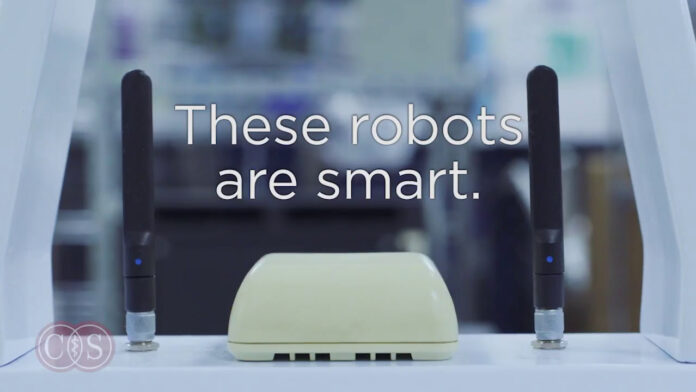The field of healthcare is constantly evolving, and one of the most significant drivers of this evolution is technology. The rise of medical robotics has been a game-changer in this regard, with its potential to revolutionize how we diagnose, treat, and manage diseases. These machines, once confined to science fiction, are now becoming an integral part of hospitals, clinics, and even our homes. In this article, we will delve into the world of medical robotics, exploring its history, applications, benefits, challenges, and what the future holds.
History of Medical Robotics
The concept of robots assisting in healthcare can be traced back to the mid-20th century when the first attempts were made to use machines in surgical procedures. However, it wasn’t until the 1980s that the field gained momentum. The first successful surgical robot, the PUMA 560, was used in a neurosurgical biopsy in 1985. This was a groundbreaking moment, as it marked the first time a robot was used to assist in a medical procedure.
In the 1990s, research and development in medical robotics began to accelerate, leading to the introduction of more advanced systems like the Zeus Robotic Surgical System. But it was in the early 2000s that medical robotics truly took off with the launch of the da Vinci Surgical System by Intuitive Surgical. This system quickly gained widespread adoption and paved the way for further innovation and advancements in the field.
Applications of Medical Robotics

Today, medical robotics has a wide range of applications in various medical specialties, including surgery, rehabilitation, diagnostics, and prosthetics. Let’s take a closer look at some of these applications and how they are transforming healthcare.
Surgery
Surgical robots have had the most significant impact on the field of medical robotics. They have transformed the way surgeries are performed, making them less invasive, more precise, and reducing recovery time for patients. The da Vinci Surgical System is a prime example of this.
This system consists of four interactive robotic arms, one of which holds a high-definition 3D camera while the other three have surgical instruments attached to them. These arms are controlled by a surgeon who sits at a console and operates using hand and foot controls. This allows for greater dexterity, range of motion, and precision than traditional surgeries.
The da Vinci system has been used in a variety of procedures, including prostatectomies, hysterectomies, and cardiac surgeries. It has also enabled surgeons to perform complex surgeries with smaller incisions, resulting in less pain and scarring for patients and faster recovery times.
Rehabilitation
Robots are also being used in rehabilitation to assist patients recovering from injuries or disabilities. Robotic exoskeletons, for example, can help individuals with spinal cord injuries to walk again. These wearable devices support the user’s body weight and use sensors, motors, and controllers to mimic the natural movement of human joints.
Additionally, robots are being used in physical therapy to aid in the recovery of motor function. They can provide repetitive and precise movements that therapists may not be able to achieve manually. This can be especially beneficial for patients with neurological conditions like stroke, Parkinson’s disease, or cerebral palsy.
Diagnostics
Medical robots are also being utilized for diagnostic purposes, primarily in radiology and pathology. In radiology, robots can assist in performing more accurate and quicker image-guided biopsies. They can also be used to conduct imaging tests like MRI and CT scans, providing more detailed and reliable results.
In pathology, robots can help automate the process of analyzing tissue samples for cancer diagnosis. They can scan slides, identify abnormal cells, and create a digital image of the sample, which can then be analyzed by a pathologist. This reduces the risk of human error and speeds up the diagnosis process.
Prosthetics
The field of prosthetics has also seen significant advancements with the use of medical robotics. Robots are being used to create more lifelike and functional prosthetic limbs with sensors that can detect muscle movements and respond accordingly. This allows amputees to regain a sense of control and natural movement in their prosthetic limb, making it easier for them to perform daily tasks.
Advantages and Disadvantages

As with any technology, medical robotics comes with its own set of advantages and disadvantages. Let’s take a look at some of them below.
Advantages
Precision and Accuracy
One of the most significant benefits of medical robotics is the level of precision and accuracy they offer. With robotic arms controlled by skilled surgeons, surgeries can be performed with greater dexterity and range of motion, resulting in better outcomes for patients.
Less Invasive Procedures
Medical robotics have enabled surgeons to perform complex procedures through smaller incisions, reducing pain and scarring for patients. This means shorter recovery times and less risk of complications.
Increased Efficiency
Robots can work tirelessly without getting tired or needing breaks, which can increase efficiency in the operating room. They can also perform tasks quicker and with more precision than humans, freeing up medical professionals to focus on other aspects of patient care.
Access to Remote Areas
With telemedicine becoming more prevalent, medical robots allow doctors to access and treat patients who are located in remote or underserved areas. This ensures that patients can receive quality healthcare regardless of their location.
Disadvantages
Cost
One of the main challenges of incorporating medical robots into healthcare is the high cost. The initial investment for these systems can be expensive, and maintenance and repairs can also add to the overall cost over time.
Training and Learning Curve
Medical professionals need extensive training to operate these machines, adding to the cost and time required before they can be used in a clinical setting. There is also a learning curve for surgeons, which can affect the efficiency and accuracy of procedures initially.
Ethical Concerns
As with any new technology, there are ethical considerations surrounding medical robotics. For example, concerns have been raised about the potential for robots to replace human jobs in the healthcare industry, leading to unemployment. There are also questions about the accountability and liability in case of malfunctions or errors caused by robotic systems.
Future Trends in Medical Robotics
The field of medical robotics is constantly evolving, and there are several exciting trends on the horizon that have the potential to transform healthcare even further.
Artificial Intelligence (AI)
Artificial intelligence is already being incorporated into medical robotics, allowing machines to learn from experience and adapt their performance. This will enhance the precision and accuracy of surgeries and other procedures, making them more efficient and effective.
Micro-Robotics
Micro-robots, or nanobots, are tiny machines that can move through the body to deliver drugs or perform specific tasks. These could potentially revolutionize drug delivery, resulting in targeted and precise treatments for diseases like cancer.
Robotic Caregivers
With an aging population, the demand for caregivers is increasing. Robotic caregivers can assist with daily tasks, monitor vital signs, and even provide companionship for the elderly. This can help alleviate the burden on healthcare providers and family members, while also providing a more independent lifestyle for seniors.
Telepresence Surgery
As telemedicine becomes more widespread, it’s not a stretch to imagine a future where doctors can perform surgeries remotely using robots. This would give patients access to specialized surgeons regardless of their location, reducing travel time and costs.
Conclusion
Medical robotics has come a long way since its inception and has proven to be a game-changer in the field of healthcare. From revolutionizing surgery to assisting in rehabilitation and diagnostics, these machines have the potential to improve patient outcomes, increase efficiency, and make healthcare more accessible. However, there are still challenges to overcome, and ethical considerations to address as we move towards a future where robots play an even bigger role in our healthcare system. As technology continues to advance, the possibilities for medical robotics are endless, and the potential benefits they offer are truly awe-inspiring.


